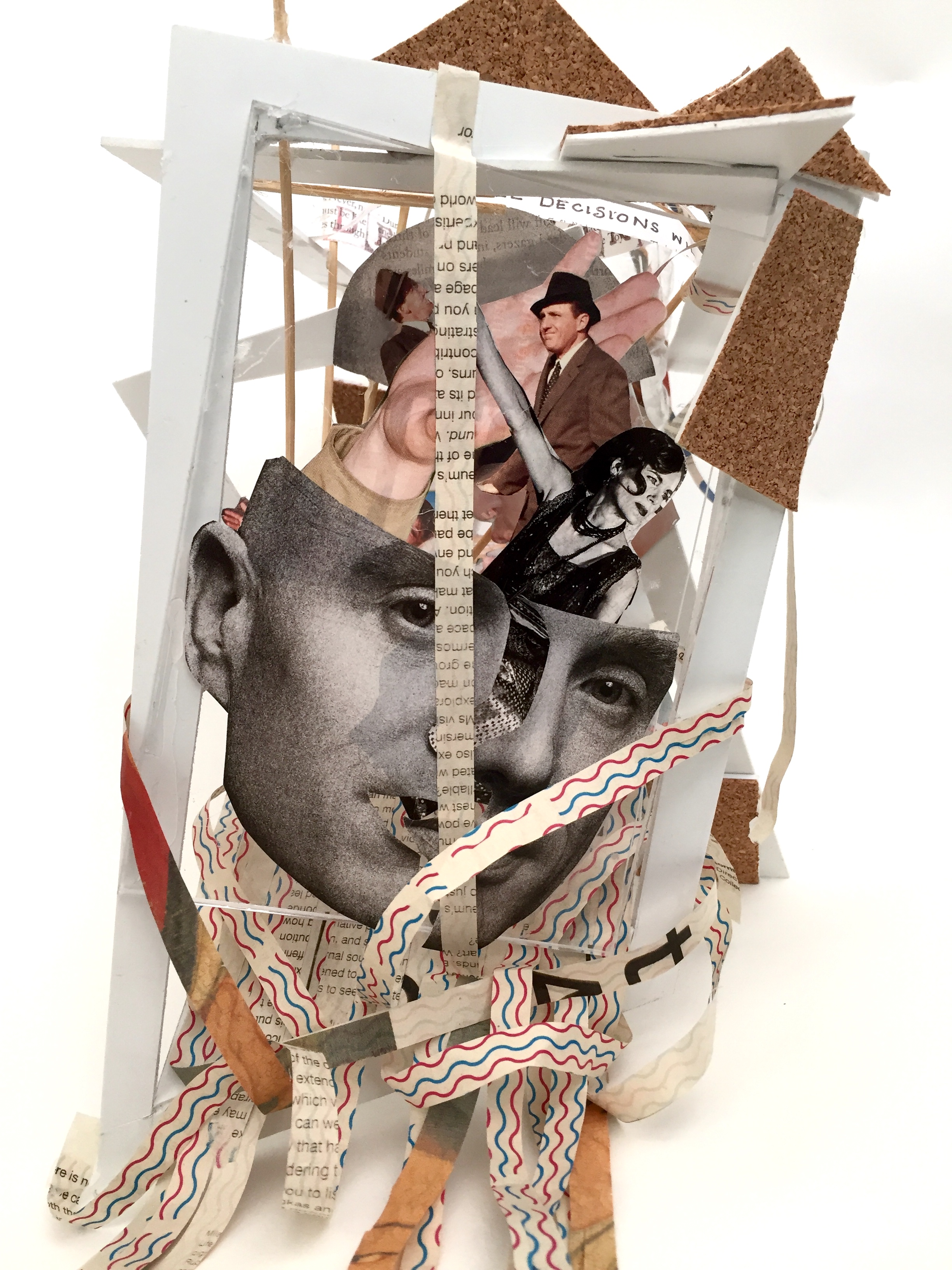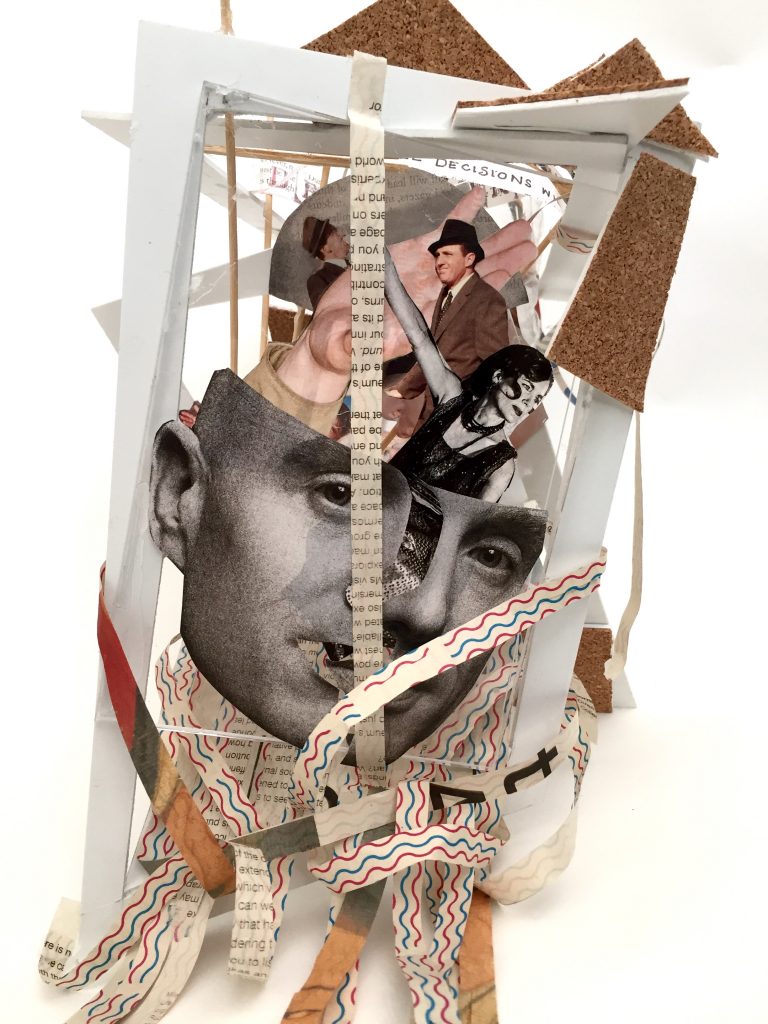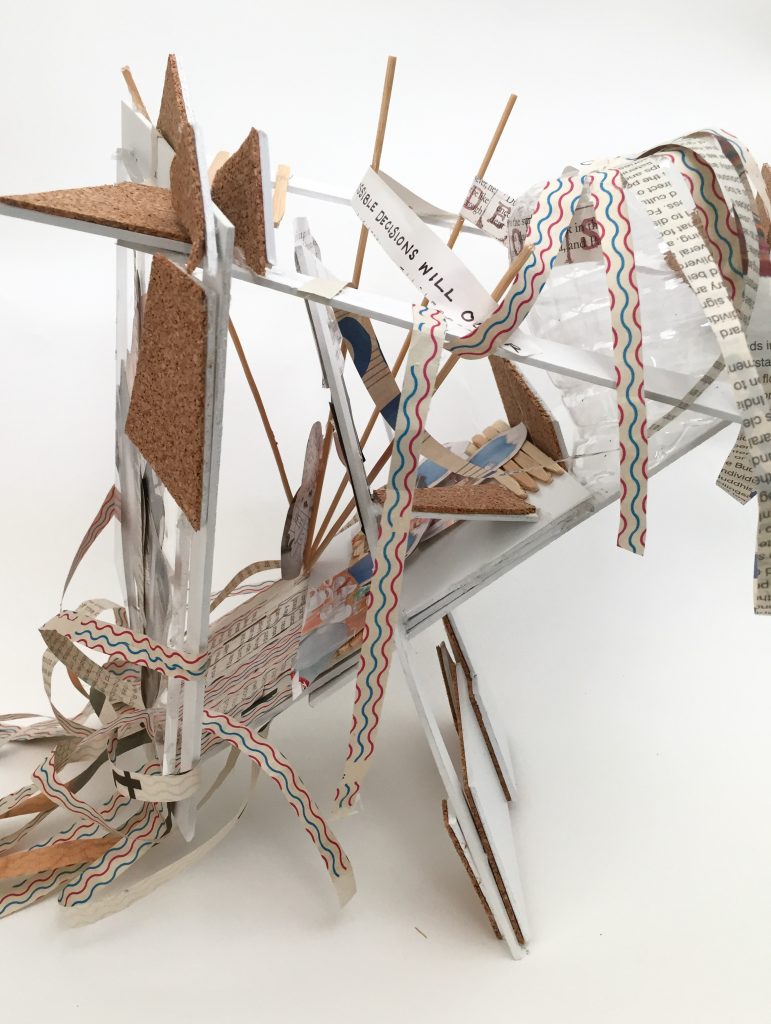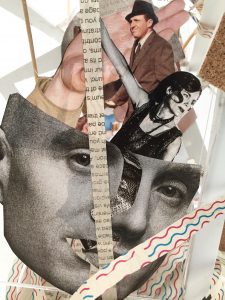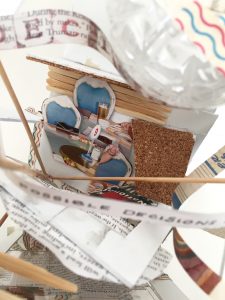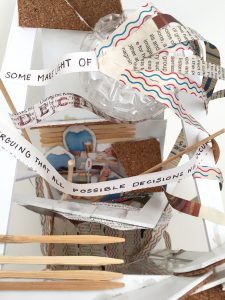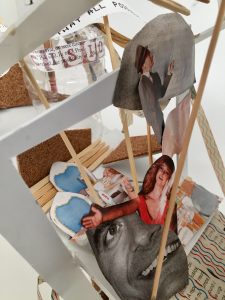Einstein’s Dreams Triptych (19 April 1905)
By: Alan Lightman
- Front view
- Side view
This chapter follows the story of a man as he is faced with the choice of approaching a woman on the street. He considers for a while, debating whether he should speak to the woman. His story is split into three; each describing possible scenarios based on his decisions. This chapter suggests the concept of infinite worlds and alternate realities that exist within time. Simply put, all decisions occur simultaneously in time, thus creating an infinite number of fates. The story concludes with the idea that some people believe decisions no longer hold great significance as all possibilities will inevitably occur and one’s fate is predetermined depending on the world in which they live, while others argue that in the absence of commitment, chaos arises. These contrasting notions of choice and decision create a contradiction among people.
Taking the idea of multiple realities, I created a visual representation of the dimensions of time by layering the frames haphazardly to form an engaging three dimensional composition. This is a non traditional triptych in which the three panels support one another to establish a structural form. The frames are placed in a slightly skewed manner as they stand precariously as if to tip over. In creating an asymmetrical and lopsided composition, I am able to convey the amorphous nature of time and dimension. The design of each individual panel becomes quite difficult to distinguish as many elements are shared among panels, suggesting the shared similar possibilities among realities, however still remaining uniquely distinct. The panels are arranged in such a way that one is able to view all three panels when looking into the sculpture from various angles, creating multiple perspectives depending on the point of view as certain elements from each panel integrate to form a singular image within the frame.
One of the main shared elements include the strips of newspaper that hang and wrap in and around the frames in a careless, disheveled manner. This strips evoke an organic movement to contrast the straight, rigid lines of the rectangular panels. These fluid linear patterns symbolize various timelines and occuring possibilities as they overlap and weave throughout the piece. The cork tiles and wooden sticks are also consistent among the three panels, placed to provide dimensionality to the space and draw association to an abstract form of buildings and structure, though also skewed and disproportionate.
Placed at the front and centre of the piece is a photo collage of a man’s face, a representation of the man in the story. His face is split down the middle and reveals a woman’s body underneath. The upper half of the man’s face is also revealed to show a hand, another man and the woman. These figures indicate the man’s relationships in this particular lifetime and the hand is symbolic of the actions and decisions he has made. This photo collage is placed on a slab of glass, transparent to allow the viewer to see through to the panel behind it. The second panel consists of the upper half of the man’s face and other human figures, significant to an alternate reality in which the man’s relationships are slightly altered. Directly behind is another collage of three empty seats to represent the three separate worlds in which the man exists. Finally, the upper and last panel consists of only words. It reads, “Some make light of decisions, arguing that all possible decisions will occur.” This phrase encompasses and conveys the overall idea in this chapter that is the infinity of realities in time.
